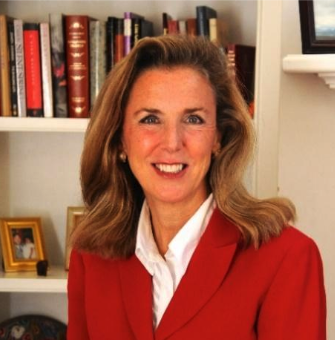Three billion people worldwide rely on fish as a major source of protein and 1 out of every 10 people depends on fishing for their livelihood. With fish populations declining worldwide, many of these people are at risk for loss of income and food insecurity.
To prevent overfishing, the Environmental Defense Fund Oceans Program works to empower fishermen to be advocates for sustainable fishing in their own communities. These fishers work to align current fishing practices with long-term ocean health – fishing at a sustainable level leads to economic gains and a more stable source of income and food.
The program is effective on a community-by-community basis, but if the current fishing trajectory continues, 85 percent of the world’s fish stocks will be depleted by 2030.
To counteract the fast-moving negative impacts from overfishing, EDF’s approach is working to scale conservation better to meet the size of the problem. Katie McGinty, Senior Vice President for Oceans at the Environmental Defense Fund brought the case to a LabStorm, and asked, how can we vastly accelerate progress? Can we energize many more fishing communities much more quickly to enable systems-level change?
- Trust is key. Inspiring local fishers to advocate for sustainable fishing in their communities requires trust. When EDF works with a new fishing community, they build personal relationships with local fishermen, learn about the realities of the fishers (and their families) and develop community engagement. In community-based conversation, they explain the repercussions of business as usual, and show fishermen the value of sustainable fishing. Sometimes, fishermen are skeptical of the EDF call for conservation, and it is difficult to get buy-in at first. Through continuous conversation and personal connection, however, EDF sees great success.
The most effective change agent is a visionary fisher. Creating space for these visionaries to drive the process will lead to quicker uptake throughout their communities. Therefore, LabStorm attendees noted that in order to scale this trust-building exercise, EDF must engage a humancentered design approach. Thinking about the fishermen as “customers” and the trust as the “product” will allow that design to scale naturally. - Stories are powerful. In order to spread the word about sustainable fishing through pre-existing social networks, EDF can create a platform for fishermen to share their stories. Letting people tell their own stories in their own words is critical, because fishers themselves are the best advocates for change.
In fact, one of their strongest advocates is a fisher who – despite coming from generations of fishers – advised his son against taking up the same career for fear that all the local waters would be fished out within a few years. With not much left to lose, he gave the EDF sustainable fishing strategy a try. After adopting this program, the area’s waters improved greatly and now his son is learning to fish alongside his father.
A personal story like this humanizes sustainable fishing and is likely to be shared organically through fishermen’s social networks. LabStorm attendees advised EDF to maximize on this storytelling by creating “Upworthy” style videos of fishermen explaining how sustainable fishing improved their yield and therefore changed their lives. - Scale behaviors, not evidence. Though there is plenty of evidence that sustainable fishing yields the most profitable long-term outcomes for fishermen, statistics are not enough to change people’s actions in real life. What really works is changing mindsets and attitudes. There are increasingly ways to creatively incentivize “good” behavior, and EDF will have greater success by framing sustainable fishing as a way to empower and change the life of each individual, rather than relying only on scientific data to prove the case. As one wise LabStorm attendee said, evidence does not influence behavior, it only influences policy. If we want to get through to fishermen, we must influence their mindsets instead.
This LabStorm showed us the importance of humanizing a movement in order to get buy-in. Do you have expertise in creating the conditions to let a movement spread organically? Let us know in the comments or email us at [email protected].


Kathleen A. “Katie” McGinty is a veteran policymaker, recognized environmental leader, and advocate for common-sense environmental solutions. In her role as Senior Vice President for the Oceans program, she leads a global team of scientists, lawyers, and advocates working to create thriving, resilient oceans.
McGinty, who served as Deputy Assistant to the President and Chair of the White House Council on Environmental Quality, has deep expertise coordinating environmental policy while working with stakeholders on all sides to ensure the best possible outcomes for the environment and the economy.
After serving as Secretary of Environmental Protection under Pennsylvania Governor Ed Rendell, McGinty went on to build a strong career in the private sector focused on developing sustainability solutions. Her achievements include leading a $100M business designing microgrids and remediating and redeveloping brownfield properties. She also lived and worked in India, serving as a Senior Visiting Fellow at TERI, a leading energy and environmental research organization in New Delhi.
McGinty is known for her vision and energy, as well as for her ability to pull people together, persist through tough challenges, and solve problems. McGinty holds a degree in chemistry from St. Joseph’s University (summa cum laude) and a law degree from Columbia University.







